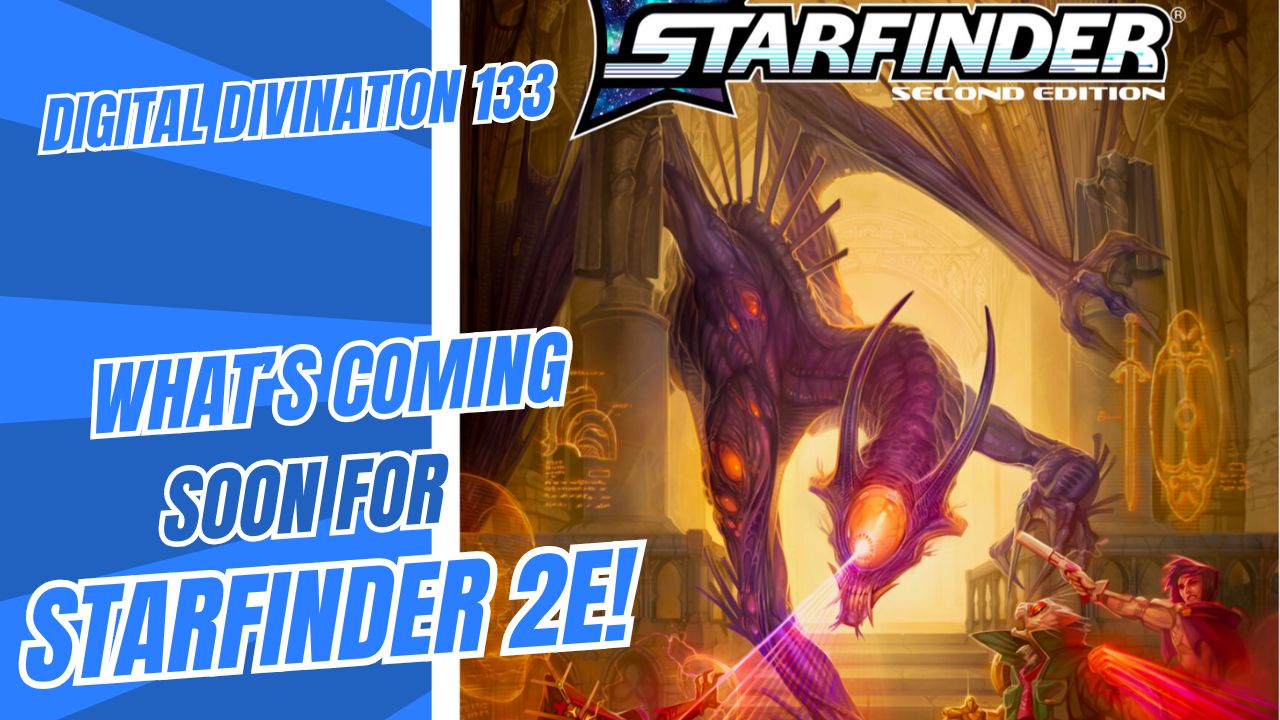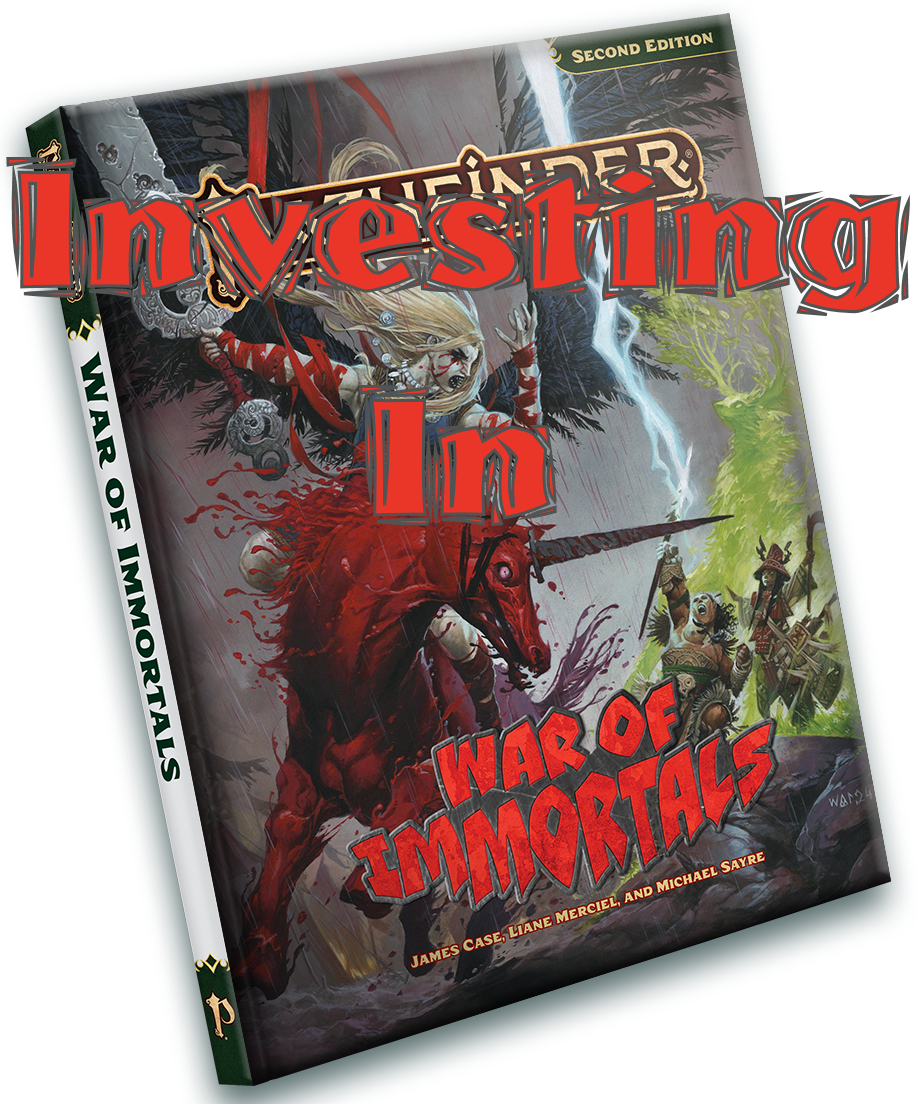Races of Stone is the first release in The Races Of series, bringing valuable background information on two PH races, the dwarf and the gnome, and introducing a new race, the goliath. The goal of the series is to provide context and insight into the races, covering each race’s point of view from religion to war to love. This is followed up by prestige classes, feats, equipment, and a nice variety of options. The question is, does all this information help inspire players and round out characters, or does it stifle creativity and waste space that could be spent on more options?
At a Glance
The covers of the Races of series feature large windows with intricate scenes featuring the principal races in action. In the case of Races of Stone, we have a dwarf rogue, gnome caster, and goliath warrior climbing a mountain. The dwarf is such a unique representation of the race, completely bald, wearing light armour, and with keys tied into his beard. At a glance, you know a lot about who this character is. The goliath looks massive, holding an appropriately large axe with ease and raising a gnome in the palm of his hand. The worried look on his face as he delicately hoists his companion up displays the compassion of his race. The issue I have with the cover is the gnome. It looks like a Halfling. The two races have so much in common physically that one would hope the RoS artists would go to great lengths to make the gnomes clearly different. Instead, this gnome, and many in the gnome section, are ambiguous. Some, like Rob Spencer’s Gnome Wedding on page 37, look much more like Halflings than gnomes.
The artwork inside does a great job showing other aspects of these races than we normally see. Dwarves are known for their drinking, but how often do we get to see a real kegger like Jim Nelson’s Dwarves at Play, page 15?
Other stand out artwork includes Gnome Alchemist by Joel Thomas on page 40, a nice depiction of a frustrated young gnome studying when she clearly yearns to play, the rousing goliath sport Goat-Ball by Thomas M Baxa on page 58, the awe-striking profile of Mualio Lonehunter by Jeremy Jarvis, and the equally intimidating depiction of a Stonechild by Bradley Williams.
The original artwork in this book definitely reflects the more leisurely theme of the book, and there are plenty of great illustrations that can be used as profile pictures for PCs.
Highlights
Goliaths and Other Races
If you want to play an exceptionally strong race, the PH limits you to a gruff and surly dwarf or a dimwitted brute half-orc. The goliath is the gentle giant that the game’s been missing. On top of their strength bonus, they also have the powerful build racial trait which treats them as one size category larger in many situations, and they can use weapons designed for large creatures.
There are some interesting new races introduced in Chapter 4: Other Races of Stone. The chaos gnome is an even flightier gnome that offers an alternative to the standard gnome, which has a reputation of being ineffective as anything but an illusionist. Feral Garguns are a new race that developed from the alienated cross-breeds of giants and goliaths, and have a backstory that turns my DM gears. And the Stonechild, first introduced in the Miniatures Handbook, is a living embodiment of the earth element. The other races don’t impress me as much, the dream dwarf being too far flung from a standard dwarf to work for me, and the whisper gnome acting pretty much as a bridge between gnomes and Halflings.
More than Just Flavour Text
The first three chapters, each profiling one of the featured race, do more than just tell a few tales and present a few facts. The entire life cycle of these races is explored, bringing these fantasy creatures to life.
Smart New Options
A whole new time of magic item, per se, is introduced in Races of Stone, Rune Circles. These are designated areas where magical bonuses are bestowed upon those that stand within, but only if they meet certain prerequisites. And Racial Substitution Levels are the start of one of the games greatest innovations. Instead of creating a whole new class to represent dwarf fighters, gnome bards, goliath druids, or the like, Races of Stone presents possible race-specific alternatives to certain class features. Large, lumbering goliath rogues, for example, get fortification instead of uncanny dodge, because even the most nimble goliath has an easier time absorbing a tough hit than dodging one.
Low Points
Options of Stone
By splitting its attention three ways, odds are only a third of this book is for any given player. Sure, some players fall in love with a specific race, but it’s doubtful that anyone falls in love with the idea of all races that live in the mountains. Worse, if you are playing a character that you want to come from the mountains who isn’t a race of stone, human ranger for example, are you going to pick up this whole book for just a few options? Even though there are sourcebooks about environments, like Frostburn and Cityscape, there aren’t any books from the environment series that cover the mountains or jungle, because they are sort of covered by Races of Stone and Races of the Wild.
Race-Specific Prestige Classes
The prestige classes in RoS aren’t so hot. They almost all have strict race requirements. It may seem contrary to the last low point, but a few prestige classes to represent a generic mountain man would have been appreciated. As is, there isn’t a lot that impresses.
Fling Ally/Enemy Feats
I’m not against either the Fling Ally or Fling Enemy feats. The image of a giant tossing his opponents whichever direction pleases you, or fastballing your little buddy into a better tactical position makes me giddy. But I dislike that it’s a feat. Why couldn’t this have been a new special attack that all characters have access to? The requirements are such that it’s nearly impossible to qualify for, and yet the dividends aren’t super powerful, just really fun.
Juicy Bits
The Reckless Rage feat is for barbarians that like rage but wish they could really froth at the mouth, throwing caution to the window. Mountain plate is the heaviest heavy armour around, perfect for tanks that don’t mind being really slow. And Goliath druids that take the first racial substitution level find themselves in command of a particularly numerous army of earth elementals.
Personal Experience
I played a goliath cleric of Kavaki, the goliath Ram-Lord. Horncarver was his name, and the war and strength domain granted by Kavaki, coupled with a goliath’s strength and large weapons, made him as effective a warrior as a caster.
I’ve also been on the receiving end of the Fling Ally feat. While epic campaigning, my gnome giant-slayer Karkerkast was the projectile flung by, ironically enough, the party’s half-giant psychic warrior Ranslarr Vega (his friends call him Slam). Kark never had any ranged specialty, so being able to reach flying creatures or get to perched archers was a boon.
Overall
Races of Stone, and the Races Of series isn’t for everyone. But if you enjoy extensive background or would just like to know more about your favourite race, these are the books for you. But if you’re more into strict crunch, it doesn’t compete with books like the two Complete series.
If You Liked This Book…
Races of the Wild is just as fun, and introduces raptorans, a race as memorable and niched as the goliath.
Savage Species is the ultimate sourcebook for players looking to expand the playable races at their disposal.




Leave a Reply